Reflecting on a visit from Schools Consent Project
In our latest blog post, Teacher of English Mark Belassie-McCourt, discusses what happened when Schools Consen...
Read MoreTeacher of Modern Languages and Yoga Instructor Ro Pakenham-Walsh explains why yoga and meditation have such an important part to play in regulating our emotions. Ro also shares her top tips for self-care and explores how to take advantage of the slower pace of life that we find ourselves in…
 Yoga is a science of wellbeing. Over the past few months, where we may have lost our usual rhythm and routine, where we will have faced increased anxieties and where we have had to adapt to a different sort of connection to our family, friends and community, the need for a practice which benefits the mind and body has been particularly valuable.
Yoga is a science of wellbeing. Over the past few months, where we may have lost our usual rhythm and routine, where we will have faced increased anxieties and where we have had to adapt to a different sort of connection to our family, friends and community, the need for a practice which benefits the mind and body has been particularly valuable.
Central to yoga is the idea of ‘bringing together’: connecting to and better understanding our minds, our bodies and each other. When we stretch our bodies, we are signalling to our brain that we are relaxed. When we breathe deeply, we activate the baroreceptors in our lungs which tell the body to relax. When we focus on one thing, i.e. the breath, we help to train the brain to be strong and not to wander or ruminate, which is the basis of so much anxiety.
For most of us, social media platforms have come to our rescue in helping us continue life as normal. However, it can also be hard to escape the distraction and stimulation they provide. Time ‘on the mat’ (or in any mindful movement practice) can help bring us out of our minds and back into our bodies. Whilst taking ‘time-in’ (i.e. time to turn our attention inwards) can be challenging and certainly less exciting than the stimulation offered by external sources, research has shown that present-moment awareness can create happiness and wellbeing in our lives.
There are countless physical benefits to practising yoga. Far more than simply stretching, yoga builds strength and flexibility, mobilises joints and improves balance. It has a positive impact on all the systems, helping to boost circulation, improve digestion and keep the body balanced.
For the athlete, yoga brings reduced risk of injury, faster recovery between sessions and improved performance. Several sports teams at Bryanston factor yoga into their programme to develop greater strength and flexibility, to balance muscle groups, or to aid recovery following major games.
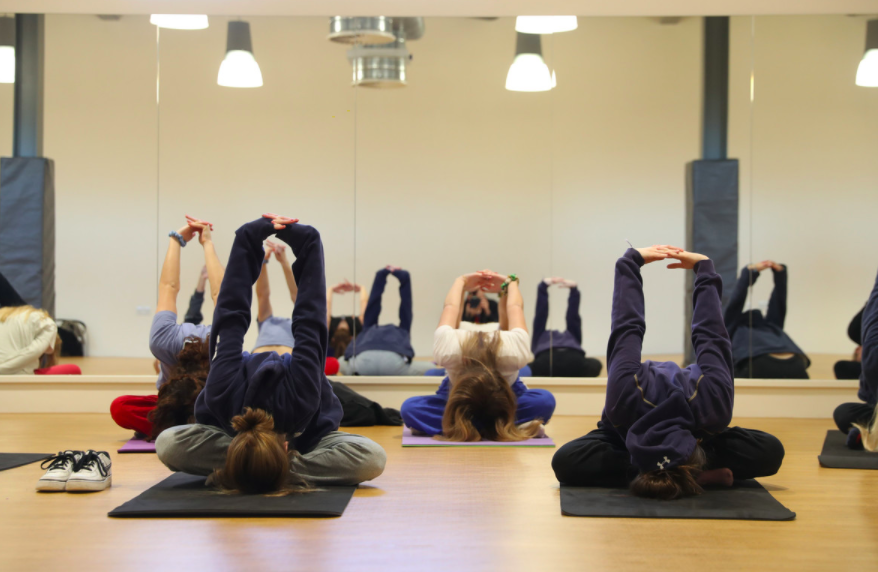 Importantly, yoga is known to help improve sleep, which has been said to be one of the single most valuable ingredients for a healthy mind and body. Improved sleep is often the greatest bit of feedback I get from pupils, many of whom have come along one evening to try yoga for the first time.
Importantly, yoga is known to help improve sleep, which has been said to be one of the single most valuable ingredients for a healthy mind and body. Improved sleep is often the greatest bit of feedback I get from pupils, many of whom have come along one evening to try yoga for the first time.
Just like our body strengthens physically in response to physical exercise, so our brain strengthens in response to mental exercise. Directing our attention to one thing, such as movement, the breath or the senses helps us to exercise and promote integration within the brain. Doing this on a regular basis can develop and strengthen mental pathways which helps to regulate emotions, focus attention, improve memory and promote a sense of enhanced wellbeing and connection to others. These benefits are available at any age, however they are particularly valuable during adolescence, when the prefrontal regions of the brain are still in development. During times of heightened stress, regular practice helps to keep the mind resilient, flexible and calm.
In the mindfulness app ‘Headspace’, founder Andy Puddicombe discusses the link between mindfulness and creativity. Here, he offers techniques to create space in the mind from which creative thought can arise. Regular practice and directed attention help to quieten the problem-solving mind, which can dominate our thought patterns. Given the creative potential of the adolescent years, practising the art of slowing down as a vital component of the creative process of building up will serve every young person well both at school and in their future lives.
Se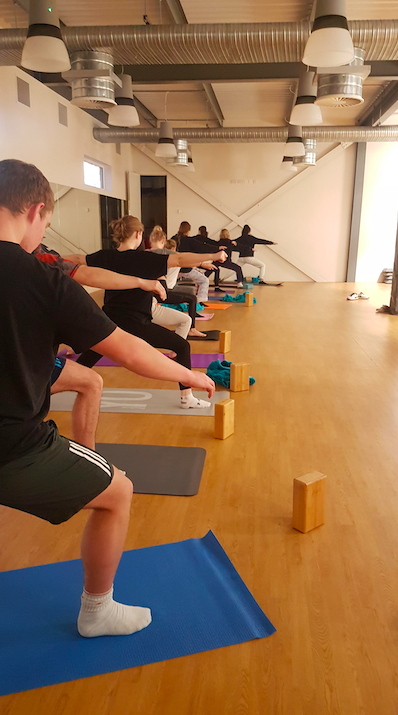 t aside some time each day to work the body and mind (10 minutes plus, or as much as you have). Keeping to the same time each day can help. Try to find the most fun and enjoyable way for you and remember that you are looking for something which removes tension from the body and mind, not something that adds to it!
t aside some time each day to work the body and mind (10 minutes plus, or as much as you have). Keeping to the same time each day can help. Try to find the most fun and enjoyable way for you and remember that you are looking for something which removes tension from the body and mind, not something that adds to it!
Spend time in nature. Nature has a naturally calming effect and can help relieve stress and anxiety, improve your mood and boost feelings of happiness and wellbeing. Research has shown that environments can increase or reduce our stress, which in turn impacts our bodies.
Sleep/deep rest. Sleep helps to keep our immune systems strong and has a multitude of other benefits to the health of our bodies and minds. Getting enough sleep can also help us make healthier lifestyle choices, as well as making it easier for our minds to focus effectively and our bodies to move with greater ease, balance and coordination.
As Proust says, “the real voyage of discovery consists not in seeking new landscapes, but in having new eyes.” Take advantage of the quieter pace of life we are currently experiencing; let your mind slow down and notice the details which you may not have had the time to see before. Let your attention rest on the task in hand as much as possible. The essential idea is that we are looking for something that is more attractive for our minds to focus on than our current fears and preoccupations.
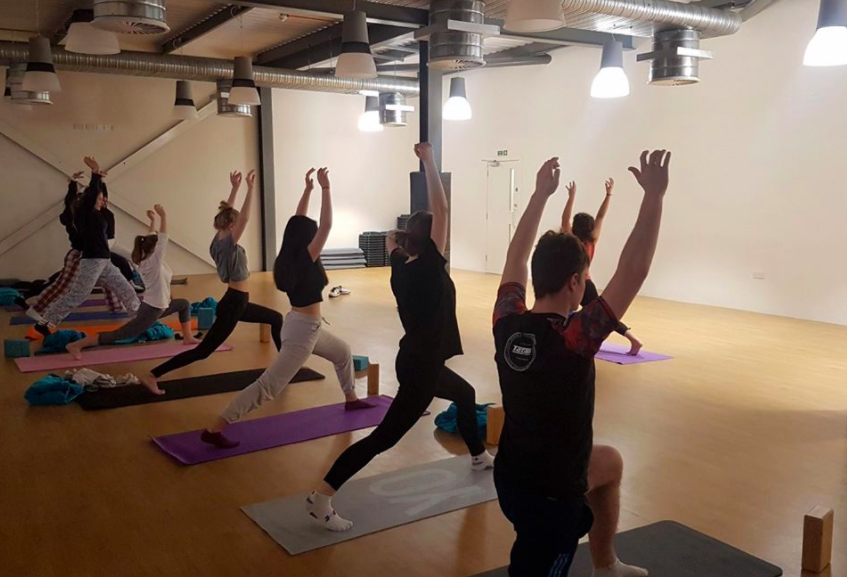 Without realising it, the body, mind and breath can accumulate tension. Stretching the muscles, mobilising the spine and elongating the breath is the most direct way we can learn what it means to let go. In doing so, we are bringing the whole body back to its most functional and flexible state.
Without realising it, the body, mind and breath can accumulate tension. Stretching the muscles, mobilising the spine and elongating the breath is the most direct way we can learn what it means to let go. In doing so, we are bringing the whole body back to its most functional and flexible state.
Aside from the cognitive skills mentioned above, yoga can also help with emotional control. Sometimes the brain can run the show. Yoga asanas (poses) help to develop an interior awareness and it can take only two minutes to change the chemical composition of our bodies using poses, breathing techniques and exercises to calm the mind. What’s more, the mind can encourage the brain to fire and grow in ways we choose. Given that so much of our behaviour is driven by mental processes outside our awareness, tuning-in and following a few short exercises can have a profoundly positive impact on the way in which we see the world around us and interact with others.
Directed attention during movement or meditation also strengthens the circuits in the brain which help us become more emotionally and socially intelligent. It is a skill which, when learnt early on, can optimize the essence of adolescence and encourage feelings of connection to others throughout our lives.
Despite the potential for confusion and emotional turbulence, the changing structure of the adolescent brain makes pupils’ time at school rife with opportunity for creativity, individuality and connecting with others. Practices such as yoga and other mindful movement techniques can help to get the most out of this time and learn vital skills for later life.
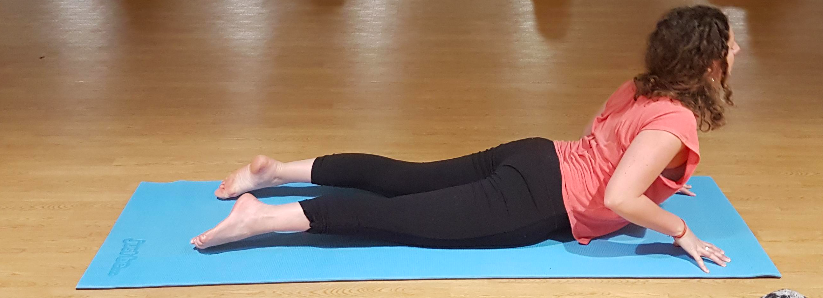
I first came into yoga as a way of combatting the heavily one-sided demands of racket sports, finding it helpful as a rehabilitative measure and a way of improving strength and flexibility. However, like many of the pupils who join our morning/evening sessions, I soon became aware of the overwhelming sense of calm following every session and began to notice the positive impact this had on my work and relationships.
Like everything, there are so many different styles and forms of yoga. I’ll never forget one teacher who insisted we practise falling from balances for the entire lesson! It was the most creative and fun 90-minute class I have done. Every now and again, when I am teaching (French) in the classroom, I consider dropping into a spectacular fall to counter any accumulated tension – and then come back to my senses…
Teaching yoga regularly at school has meant keeping on top of my game and practising a lot, too. It’s a humbling practice with so much more to offer than the stretching which initially attracted me. It has, without a shadow of a doubt, helped me during challenging times and to balance a busy workload. My training in India focused heavily on aspects of yoga such as breathwork, and it has been very interesting to see similar techniques being advocated by Alicia Drummond as a means of alleviating anxiety and more recently by doctors as a means of exercising the lungs.
Yoga and mindfulness practices can be challenging to start and sustain, particularly during lockdown when our usual routines have all but disappeared. However, there will be times in the day where we can take ourselves out of our minds and back into our bodies – and we don’t need to be sitting cross-legged! Here are five different ways in which you can embed a yoga practice into your day without setting aside any extra time:
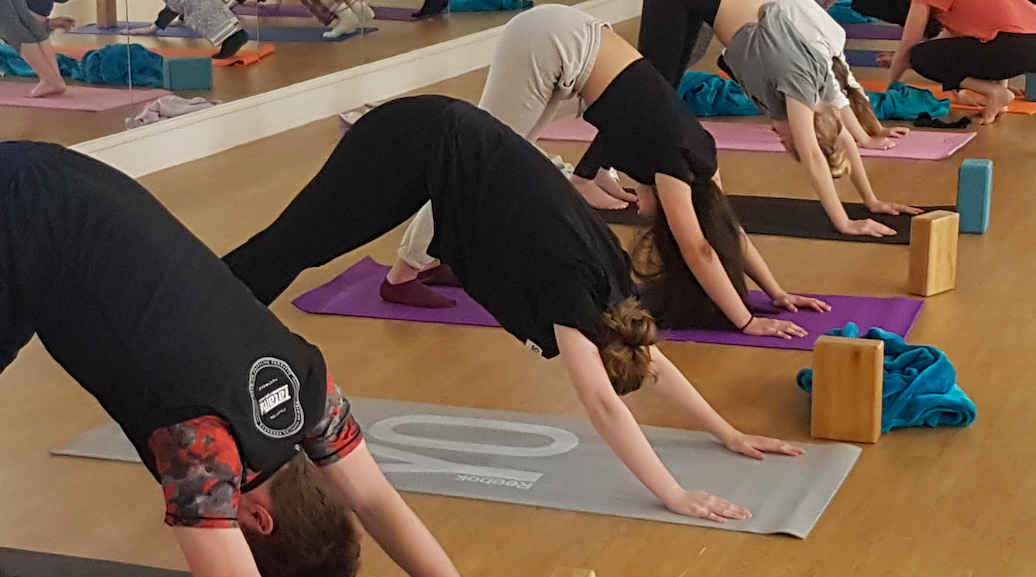 The breath is a great tool to use as it is always with us and often reflects the tension we are unconsciously holding. Letting the mind rest on your breath helps to keep it anchored. Breathwork and mindfulness exercises not only calm the body but also build awareness, which is the first step to the goal of yoga. The most important thing is to enjoy it, so find an element of yoga which interests you and make it your own!
The breath is a great tool to use as it is always with us and often reflects the tension we are unconsciously holding. Letting the mind rest on your breath helps to keep it anchored. Breathwork and mindfulness exercises not only calm the body but also build awareness, which is the first step to the goal of yoga. The most important thing is to enjoy it, so find an element of yoga which interests you and make it your own!
Recommendations